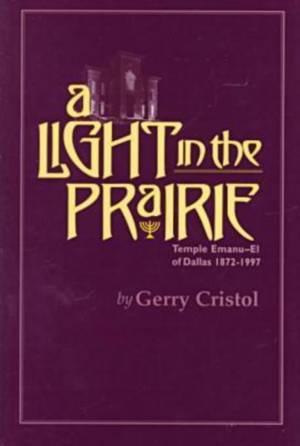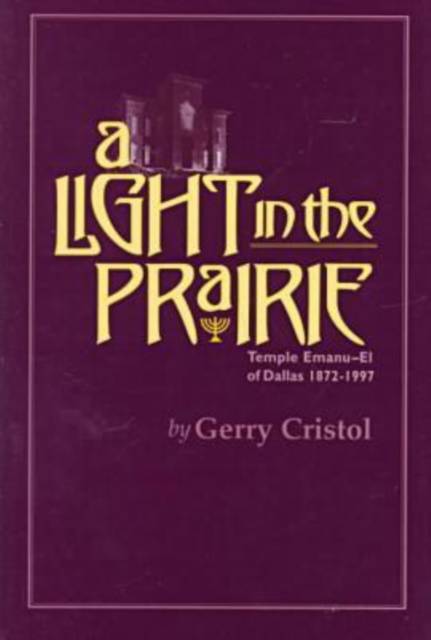
- Afhalen na 1 uur in een winkel met voorraad
- Gratis thuislevering in België vanaf € 30
- Ruim aanbod met 7 miljoen producten
- Afhalen na 1 uur in een winkel met voorraad
- Gratis thuislevering in België vanaf € 30
- Ruim aanbod met 7 miljoen producten
Zoeken
€ 41,95
+ 83 punten
Omschrijving
Temple Emanu-El, the first Jewish congregation in North Texas, has played a historic role in the growth of Dallas. Founded in 1875, the temple evolved from the Hebrew Benevolent Association, organized in 1872 by eleven men who established a cemetery and held the first Jewish services. This initial gathering of pioneer Jews occurred just two weeks before the arrival of the first train--the indispensable catalyst for Dallas' development into a bustling commercial center. Arguably, Temple Emanu-El owes its ascendancy to the auspicious designation of Dallas as a railroad crossroads. Jews, like other enterprising newcomers, were drawn to the railroad boom town and became part of the westward sweep of trade and emigration to Dallas. These early settlers participated in every aspect of civic growth and responsibility. They invested their life savings in stores on the courthouse square, manned the volunteer fire department, and ran for public office. Like Alexander Sanger, who opened the Dallas branch of Sanger Bros. in 1872 and was elected city alderman the next year, Jews quickly identified with the progressive "Dallas spirit." While retaining the basic principles of their ancestral faith, Temple Emanu-El's Reform Jews adapted their religious practices to conform to the secular demands of life in America. With confidence in the city's promise of progress, congregants actively promoted Dallas' business, civic, and cultural development. Each succeeding generation of temple families produced important leaders whose contribution to the advancement and enrichment of both the temple and the city shaped both. The temple's rabbis addressed controversial issues--Dr. David Lefkowitz denounced the Ku Klux Klan in the early 1920s and Levi A. Olan preached to the troubled city after President Kennedy's assassination in 1963. Gerry Cristol has set this absorbing story against the history of both Dallas and American Judaism. Temple Emanu-El's story affirms a unique but nonetheless eloquent tribute to the American experience, and in A Light in the Prairie, significant social history becomes fascinating reading.
Specificaties
Betrokkenen
- Auteur(s):
- Uitgeverij:
Inhoud
- Aantal bladzijden:
- 312
- Taal:
- Engels
- Reeks:
- Reeksnummer:
- nr. 17
Eigenschappen
- Productcode (EAN):
- 9780875651842
- Verschijningsdatum:
- 1/04/1998
- Uitvoering:
- Hardcover
- Formaat:
- Genaaid
- Afmetingen:
- 163 mm x 237 mm
- Gewicht:
- 675 g

Alleen bij Standaard Boekhandel
+ 83 punten op je klantenkaart van Standaard Boekhandel
Beoordelingen
We publiceren alleen reviews die voldoen aan de voorwaarden voor reviews. Bekijk onze voorwaarden voor reviews.











